Featured Articles
A Call for Return To Same Day Weigh-Ins
A Call for Return To Same Day Weigh-Ins – I once read where a leading physician, after some serious research, claimed that professional boxers who had 20 or more fights in their careers were very likely to have suffered some type of brain damage.
This was important information for me at the time, considering I had 22 pro fights before I finally had to quit the ring. Like blowing a .09 at a traffic stop, I was just a little over the limit, but if I was driving, I was still going to jail. Or in my case, I was still going to get lost walking to the post office when I was 61.
After reading the article, I used that “20-fight rule” as an excuse if I did something foolish.I would mention the article to my friends and tell them about the rule and then I’d blurt out, “Well, I had 22 pro fights, so I guess I’m in big trouble,” and then I’d laugh like hell, adding to the hilarity of the moment.
“But that doesn’t take into account the 60 amateur fights I had,” I’d would yell out, holding my belly as I was bent over laughing. “I guess I’m in big, big, big trouble.”
Like most research, there were a few gaping holes in the 20-fight rule. If I had 20 fights and knocked every one of my opponents out in the first round, I’m pretty sure the rule wouldn’t apply to me. Or if the opposite was true, if I couldn’t take a punch and I was stopped in the first round in all of my fights, I think the same thing would be the case. I wouldn’t be taking a beating.
But few fighters fall into either category. Instead, most are between the two extremes. What I do know is, the guys who were the toughest in the ring were usually the ones who were most likely to retire from the ring hearing funny voices in their heads. Why? Because they are the ones who don’t go down easy, who take the most punishment, who stand there swapping punches with another guy on his way to the rest home. If possible, you want to avoid wars in the ring. They’re fun to watch, but they take a heavy toll.
Even the tomato cans are better off than the world-class fighters. In most of their fights, they never stick around long enough to get hurt. They don’t take a beating for 10 rounds like the contenders do. They get in, do their thing, and they get out before they get hurt.
Former opponent Bruce “The Mouse” Strauss had hundreds of fights and his philosophy was, he’d fight as hard as he could for the first few rounds and if that wasn’t good enough – if he was still taking some heavy shots from the other guy after three or four rounds – he’d take a knee. He didn’t really quit as much as he practiced the art of self-preservation. If he knew he couldn’t beat the guy after giving it everything he had, there was no reason for him to stick around and take a beating.
As fight fans, you don’t have to like the idea of a fighter not being out carried on his shield – I know I don’t – but it’s always been a part of the game.
What’s this all getting too? Apparently they are doing a little research in Las Vegas to see how much head damage is actually taking place among professional fighters.
According to an AP story by boxing writer Tim Dahlberg, the aim of the study is to find ways to make contact sports like boxing and MMA a little safer. And they’re doing it by examining athletes who are still active. Dahlberg writes that 148 current boxers and mixed martial arts fighters have already taken their first set of tests for the study, which is being conducted at the Cleveland Clinic’s new Lou Ruvo Center for Brain Health in Las Vegas. According to Dahlberg, “researchers hope to enroll more than 600 fighters in what is hoped to be at least a four-year study of their brains.”
I hope that’s enough time.
Chief investigator of the study, a Dr. Charles Bernick, says they’re not trying to prove that getting hit in the head on a regular basis can cause brain damage. They already know that’s true. What they don’t know is why some fighters develop Alzheimers or dementia pugilistica, while others don’t. The study could “lead to better ways to predict which fighters are more at risk for brain damage later in their lives.”
Fine. But if they discover the answer to that question, what can they do with it? Tell some fighters they shouldn’t be boxing because they have a higher chance of becoming punchy as they enter their golden years? Yeah, that will stop a top contender from competing.
I have a better idea of how we could make boxing safer and we could do it right now without any research or long-term study.
You start by giving the fight back to the fighters. You go back to the old ways and you hold weigh-ins on the day of the fight – say around noon – and not the day before.
It’s a simple, easy thing to do and it immediately makes the fight game a little safer and a lot more competitive. And if the promoters or the TV people or the sponsors don’t like it, well, it’s not their heads that are getting scrambled.
A good example of what I’m talking about is the middleweight title last month between Julio Cesar Chavez Jr., and Marco Antonio Rubio.
Both fighters made the 160-pound weight limit the day before their fight, but by the time they got into the ring, Chavez had put on something like 22 pounds, which put him in cruiserweight country. How do you put on 22 pounds in 30 hours? They said Chavez looked pretty weak standing on the scale the day before the fight, but by the time the bell rang, he was back up to around 181 pounds. And it showed. He looked like Hoss Cartwright taking on Barney Fife. And that’s how guys can get brain damage.
The TV commentators mentioned the weight discrepancy, but then they let it go. If they had an opinion one way or another on weighing in the day before the fight, they weren’t sharing it with us.
One of the arguments for weighing in the day before the fight is that it gives fighters more time to rehydrate and get their strength back. But if they need that much time to rebuild, maybe they don’t belong fighting in that lighter weight class.
It’s a funny thing. I was talking to some boxing people a few weeks ago and we all agreed that there are just as many punchy fighters today as there was 40 years ago. So maybe this study is important. But what I think is even more important is making sure a natural lightweight doesn’t have to go 10 or 12 long, tough rounds against a natural middleweight.
And that doesn’t require any research.
A Call for Return To Same Day Weigh-Ins / Check out more boxing news on video at The Boxing Channel.
-
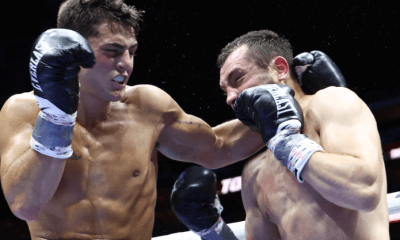
 Featured Articles3 weeks ago
Featured Articles3 weeks agoVito Mielnicki Jr Whitewashes Kamil Gardzielik Before the Home Folks in Newark
-
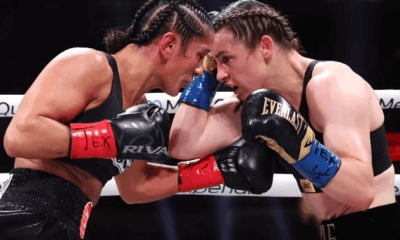
 Featured Articles4 days ago
Featured Articles4 days agoResults and Recaps from New York Where Taylor Edged Serrano Once Again
-
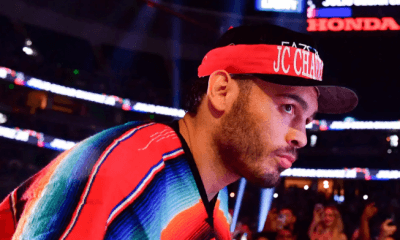
 Featured Articles1 week ago
Featured Articles1 week agoFrom a Sympathetic Figure to a Pariah: The Travails of Julio Cesar Chavez Jr
-
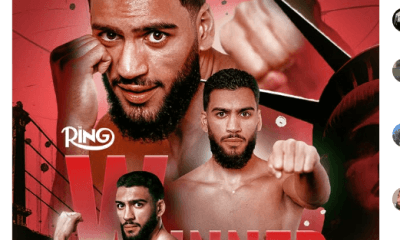
 Featured Articles3 days ago
Featured Articles3 days agoResults and Recaps from NYC where Hamzah Sheeraz was Spectacular
-
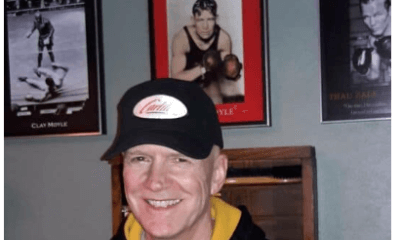
 Featured Articles4 weeks ago
Featured Articles4 weeks agoCatching Up with Clay Moyle Who Talks About His Massive Collection of Boxing Books
-
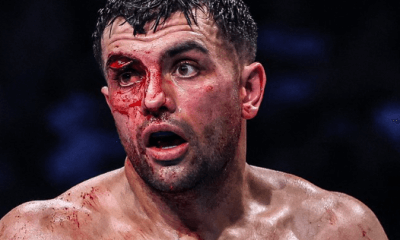
 Featured Articles1 week ago
Featured Articles1 week agoCatterall vs Eubank Ends Prematurely; Catterall Wins a Technical Decision
-
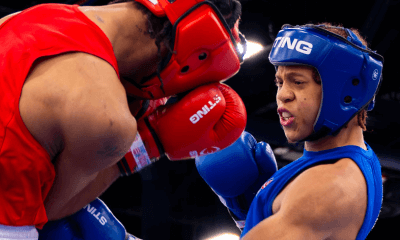
 Featured Articles3 weeks ago
Featured Articles3 weeks agoMore Medals for Hawaii’s Patricio Family at the USA Boxing Summer Festival
-
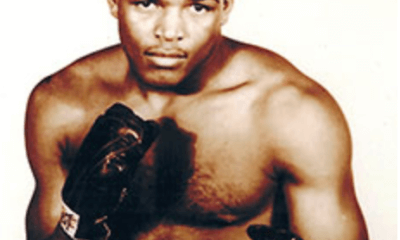
 Featured Articles4 days ago
Featured Articles4 days agoPhiladelphia Welterweight Gil Turner, a Phenom, Now Rests in an Unmarked Grave

















